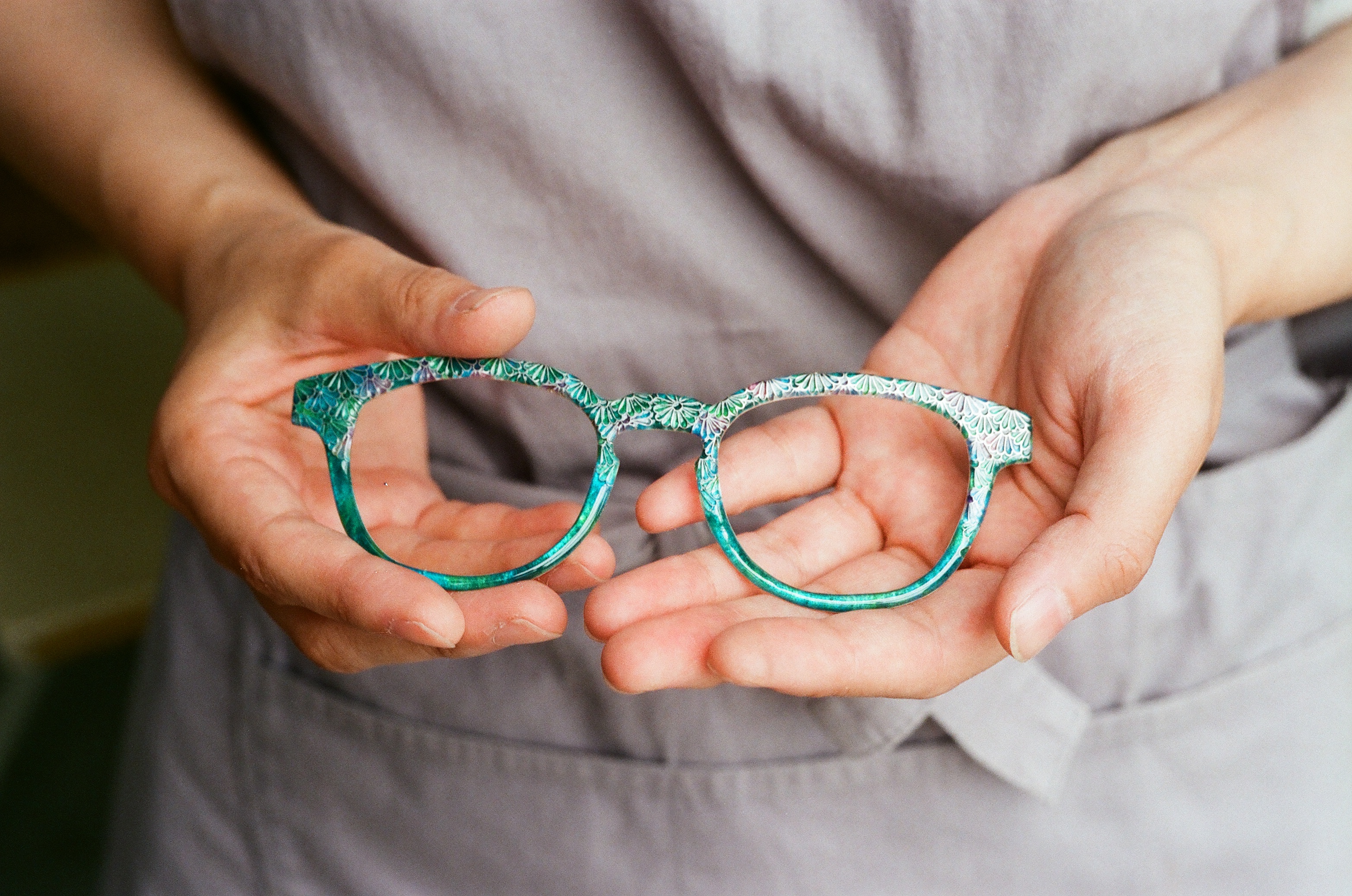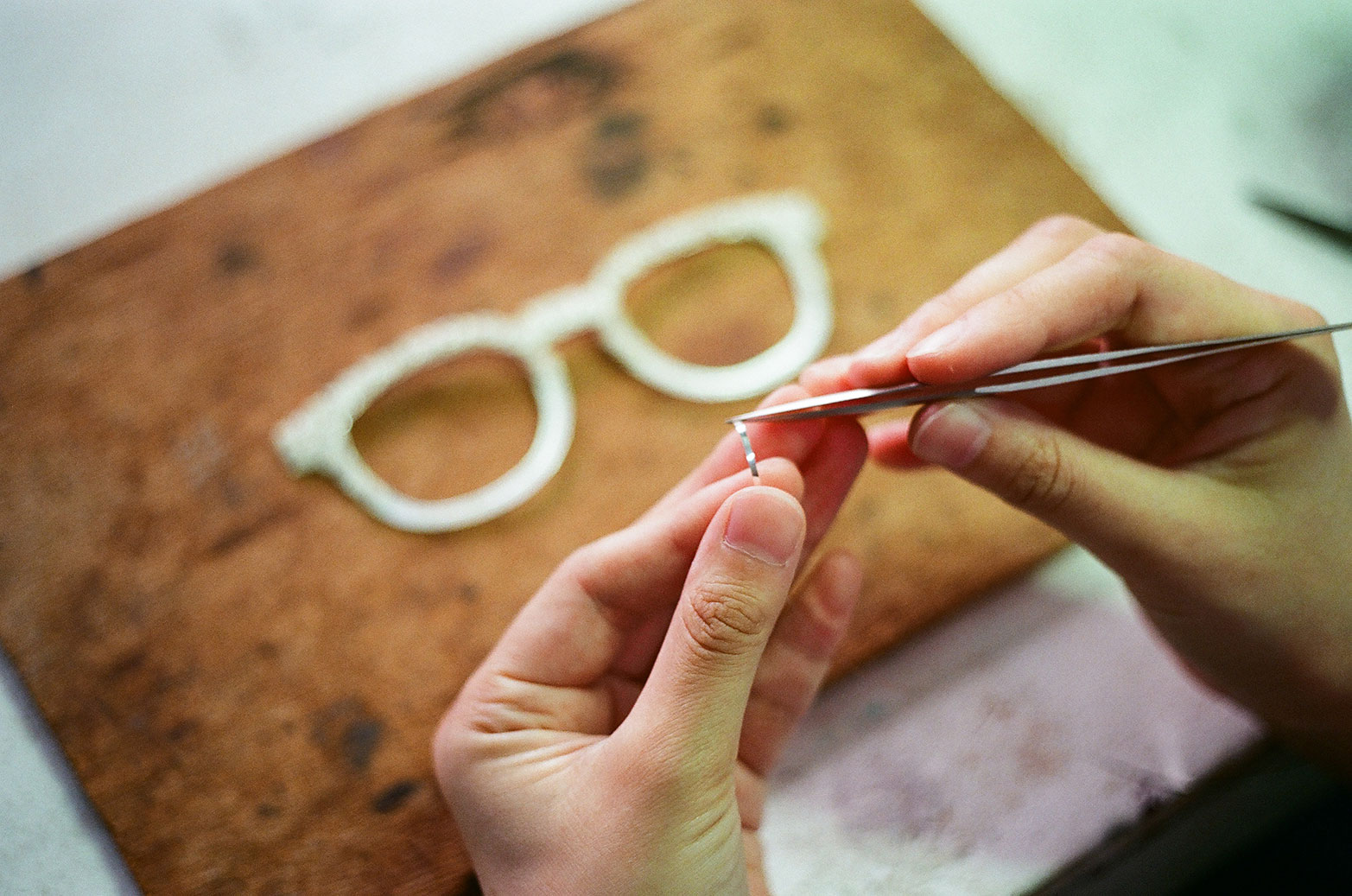
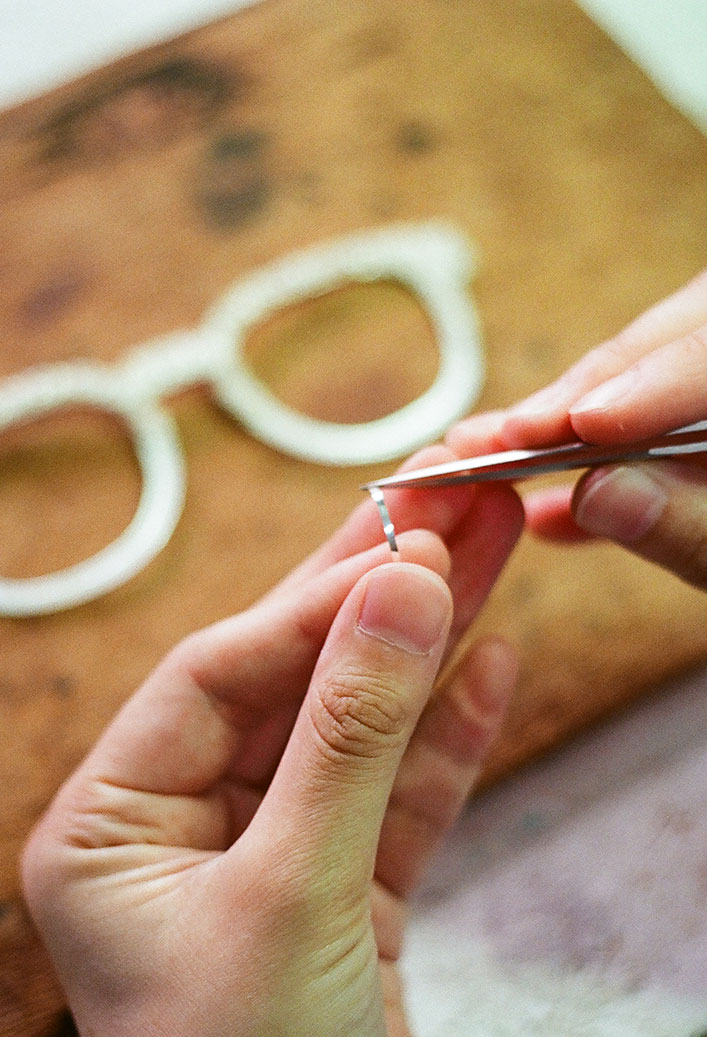
EYEVAN × KYOTO
interview 8
“Wired Cloisonné, connecting the world with color”
Ms. Maiko Muroi, Hiromi Art (est. 1970/ Nishikyo-ku, Kyoto, Japan)
Cloisonné is a technique that is used in eyeglass making. Hiromi Art is a studio that mainly makes accessories using wired cloisonne, a type of cloisonne made with metal wires. We interviewed Ms. Muroi, who enjoys the process of wired cloisonné, which is like dividing space with lines and connecting worlds with colors.
About Cloisonné
Tutankhamun’s mask is the oldest of the cloisonné
The oldest known use of the cloisonné technique is the golden mask of Tutankhamen. The cloisonné technique shifted from 3D to usage for ornamental accessories for dressing up. The technique came from abroad, but after coming to Japan, it became “wired cloisonné” using dense metal wire. The cloisonné making process involves cutting the metal of the base into the required shape, then using metal wire to form the outline of the pattern on top of the metal. Glaze is applied so that colors won’t be mixed, and the pattern will stand out. Baking the base, baking the lines, polishing, and baking. Multiple firing processes are interspersed to complete the process.
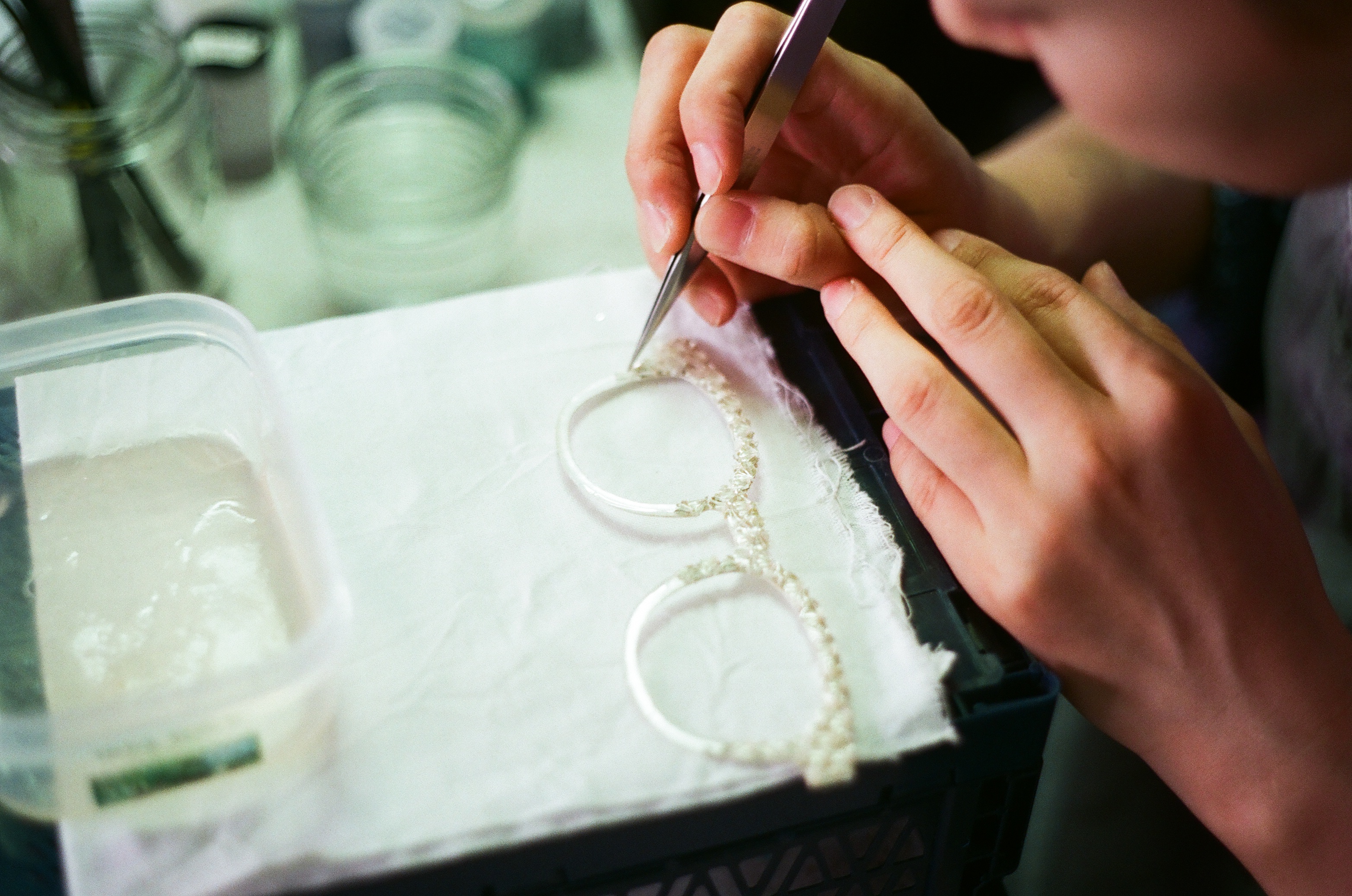
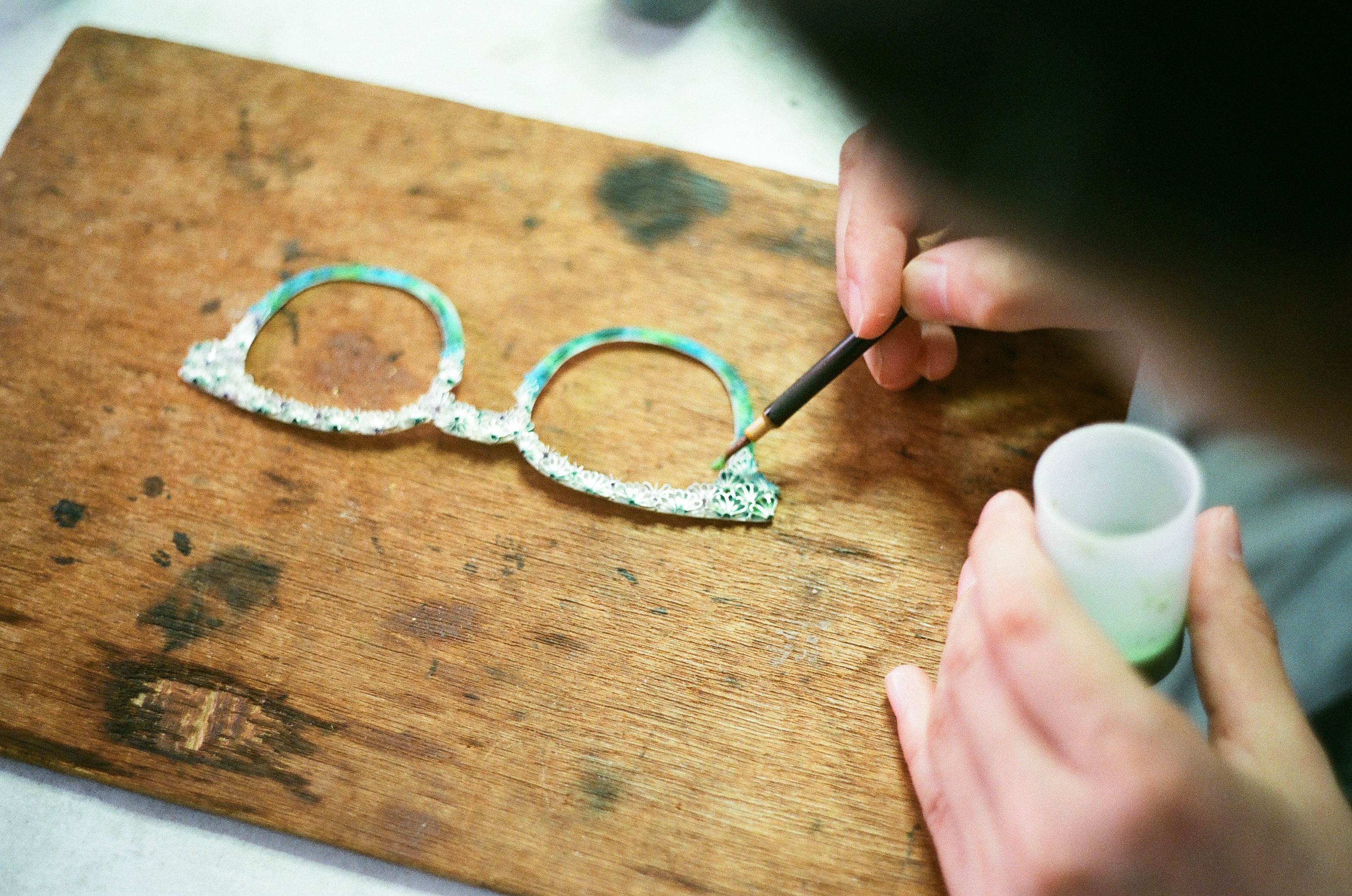
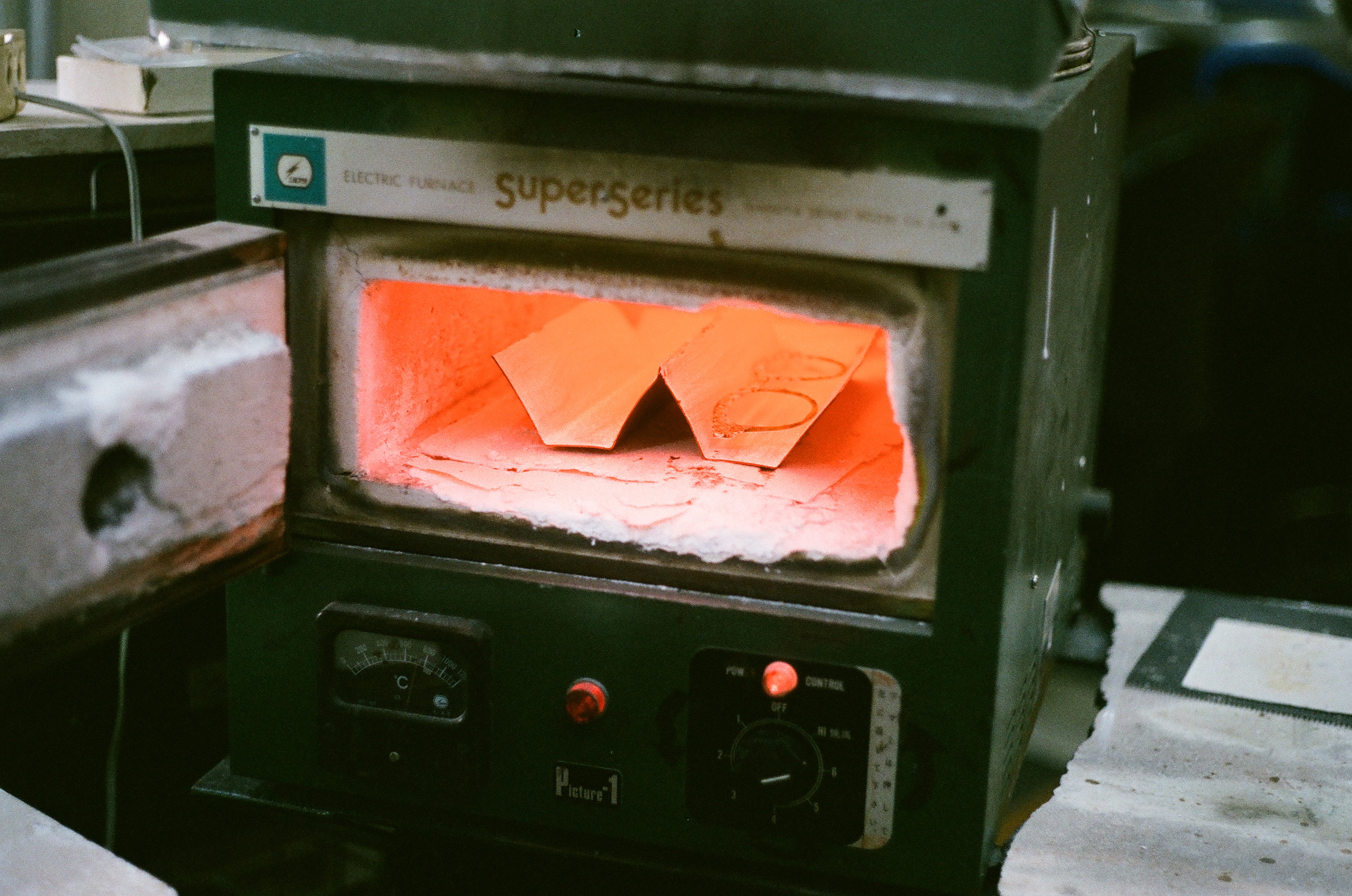
Our characteristic
Extension of paints
Customers often tell me, “Hiromi Art’s cloisonné is easy to recognize, as the colors are so different.” Cloisonné techniques and materials are the same everywhere. However, people says that the colors are so unique, which I think is a strength. I have always loved painting with colors and I have continued my research and trial-and-error regarding colors for a long time.
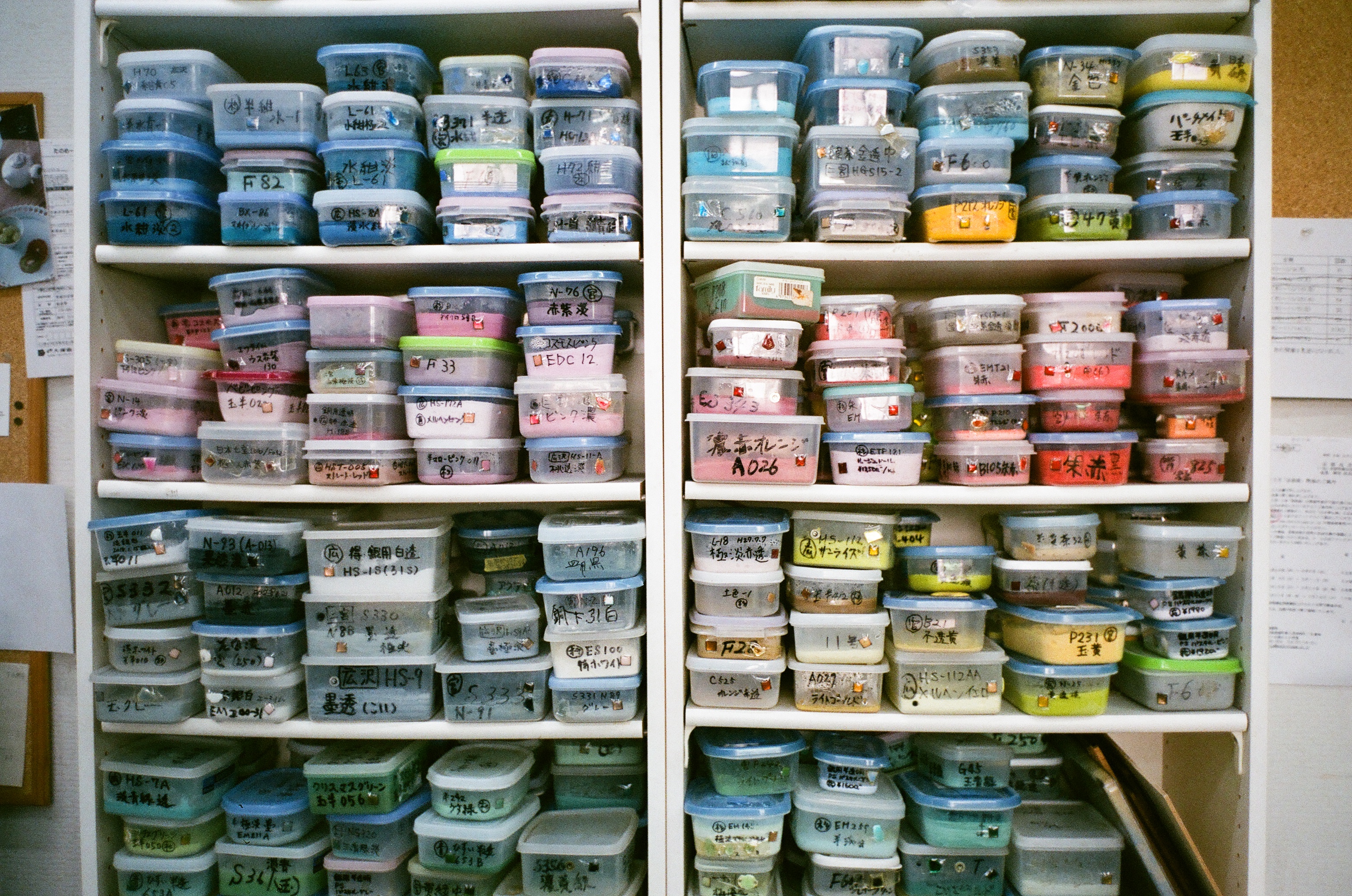
About Succession
More opportunities to connect with cloisonné
I have not met many people younger than me who want to do cloisonné art. Since the people at the center of cloisonné are in their 60s and 70s, there are not many places where people can learn cloisonné. I was doing engraving in college and happened to have a teacher who taught me about it. Since there are no opportunities to learn cloisonné professionally, we often provide workshops, and I believe that this will be one of the options to get to know it as a profession. I would like to continue my activities so that people will be aware that cloisonné exists.
Our values
If you try, you can do it
There are many things you can do if you try anyway. However, cloisonné cannot be baked on iron or stainless steel due to their characteristics, so there are actually things that are impossible. In such cases, I sometimes come up with the idea of attaching the cloisonné to a stainless-steel part, instead of baking it on. Basically, I believe I can do anything if I try.
Meaning of tradition
Continue to keep the same technique
The traditional technique of wired cloisonné is to set up a silver wire and add color to it. If we keep this technique, traditional way of cloisonné art will probably not disappear, and the art will remain. I would like to continue to work on wired cloisonné with great enthusiasm, whether the shape is a trinket, an object, or anything else.
